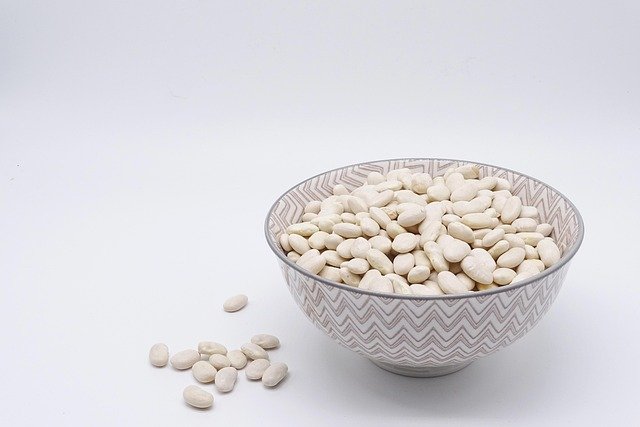The Wellness Revolution of Mycoprotein
A new protein source is revolutionizing the health food industry, offering a sustainable and nutritious alternative to traditional meat. But what exactly is mycoprotein, and how can it benefit your health? This fascinating fungus-derived food is gaining popularity among health-conscious consumers and environmentalists alike. Let's dive into the world of mycoprotein and explore its potential to transform our diets and our planet.

The Origins of Mycoprotein
Mycoprotein has a fascinating history that dates back to the 1960s. British scientists, concerned about potential global protein shortages, began searching for alternative protein sources. Their research led them to a specific strain of fungi called Fusarium venenatum, which they discovered could be cultivated and processed into a nutritious food product.
After years of rigorous testing and development, mycoprotein was approved for human consumption in the 1980s. Since then, it has gained popularity as a meat alternative, particularly in Europe and North America. The production process involves fermenting the Fusarium venenatum in large tanks, similar to the brewing of beer or yogurt production.
Nutritional Profile and Health Benefits
Mycoprotein boasts an impressive nutritional profile that makes it an attractive option for health-conscious individuals. It is high in protein, containing all nine essential amino acids, making it a complete protein source comparable to meat. Additionally, mycoprotein is naturally low in fat and contains no cholesterol, making it heart-healthy.
One of the most significant health benefits of mycoprotein is its high fiber content. Unlike animal-based proteins, mycoprotein provides a substantial amount of both soluble and insoluble fiber, which can aid in digestion, promote feelings of fullness, and help regulate blood sugar levels.
Environmental Sustainability
In an era of increasing environmental awareness, mycoprotein stands out as a sustainable protein source. Compared to traditional livestock farming, the production of mycoprotein requires significantly less land, water, and energy. This makes it an environmentally friendly alternative to meat, with a much lower carbon footprint.
Furthermore, mycoprotein production generates minimal waste and does not contribute to deforestation or habitat destruction, issues often associated with large-scale animal agriculture. As consumers become more environmentally conscious, the sustainability aspect of mycoprotein is likely to drive its popularity even further.
Versatility in Cooking and Food Applications
One of the most exciting aspects of mycoprotein is its versatility in the kitchen. Its texture and flavor profile allow it to be used as a meat substitute in a wide variety of dishes. From burgers and nuggets to stir-fries and curries, mycoprotein can be prepared in numerous ways to suit different tastes and cuisines.
Food manufacturers are also incorporating mycoprotein into ready-made meals and snacks, making it more accessible to consumers. As demand grows, we can expect to see an even wider range of mycoprotein-based products hitting the market, offering convenient and healthy alternatives to traditional meat-based options.
Potential Challenges and Considerations
While mycoprotein offers numerous benefits, it’s important to consider potential challenges and limitations. Some individuals may have allergies or sensitivities to fungi, which could make mycoprotein unsuitable for them. As with any new food, it’s advisable to introduce mycoprotein gradually into one’s diet and monitor for any adverse reactions.
Another consideration is the processing involved in creating mycoprotein products. While the base ingredient is natural and nutritious, some commercial products may contain additives or undergo extensive processing, which could potentially reduce their overall health benefits. Consumers should be mindful of this and opt for minimally processed mycoprotein products when possible.
Future Prospects and Research
The future of mycoprotein looks promising, with ongoing research exploring its potential benefits beyond nutrition. Scientists are investigating its possible role in supporting gut health, managing weight, and even reducing the risk of certain chronic diseases.
Additionally, as technology advances, we may see improvements in production methods that could make mycoprotein even more sustainable and cost-effective. This could lead to wider adoption and availability of mycoprotein-based products worldwide, potentially revolutionizing global food systems.
Mycoprotein Marvels: Quick Facts and Tips
• Mycoprotein contains about 11 grams of protein per 100 grams, comparable to many meats
• It’s an excellent source of zinc and selenium, important minerals for immune function
• Mycoprotein has a low glycemic index, making it suitable for blood sugar management
• When cooking, marinate mycoprotein to enhance its flavor absorption
• Experiment with different textures by varying cooking methods like grilling, baking, or sautéing
• Mycoprotein can be stored in the freezer, extending its shelf life
• Combining mycoprotein with whole grains creates a complete amino acid profile
• Some studies suggest mycoprotein may help lower cholesterol levels
As we navigate the complex landscape of nutrition and sustainability, mycoprotein emerges as a promising solution to many of our dietary and environmental challenges. Its unique combination of nutritional benefits, culinary versatility, and eco-friendliness positions it as a food of the future. Whether you’re looking to reduce your meat consumption, increase your protein intake, or simply explore new and healthy food options, mycoprotein offers an exciting alternative worth considering. As research continues and awareness grows, we may well see this fascinating fungi-based food playing an increasingly important role in global nutrition and sustainable eating practices.





